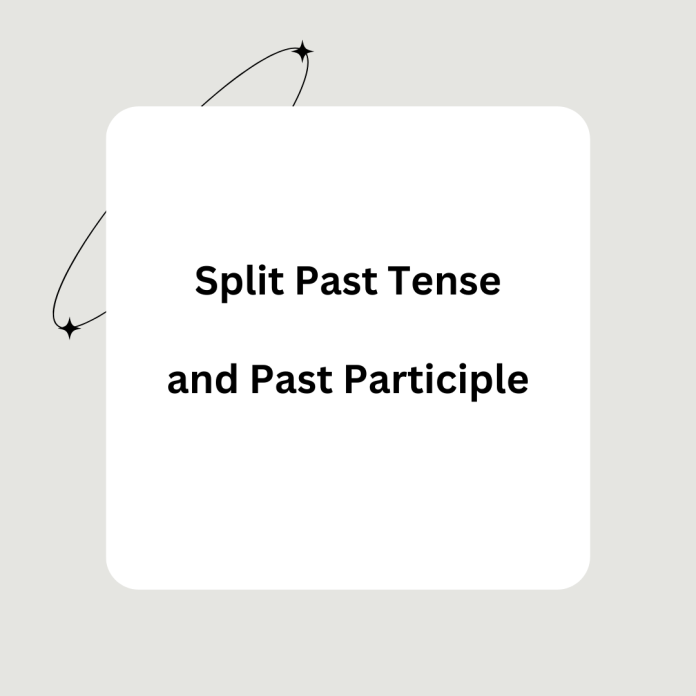Introduction: Split Past Tense and Past Participle
Language is a fascinating tapestry woven with intricate threads, including various tenses and forms of verbs. In this exploration, we delve into the split past tense and past participle, shedding light on their usage and nuances, with a particular focus on the verb “split.”
Split Past Tense/ What is Past Tense of Split:
The past tense of “split” is straightforward: it remains unchanged. Whether referring to the present or past, the verb “split” maintains its form. For example, “Yesterday, I split the log,” or “Today, I split the log.” In both cases, “split” remains unaltered, showcasing its simplicity and consistency in past tense usage.
Split Past Participle/ What is Past Participle of Split:
The past participle of “split” is also “split.” This form is used in various grammatical constructs, such as perfect tenses and passive voice. For instance, “The log was split,” or “I have split many logs.” In both cases, “split” functions as the past participle, indicating a completed action or state.
In essence, the verb “split” exhibits a unique characteristic in its past tense and past participle forms, remaining unchanged regardless of tense or context. This simplicity adds to its versatility and ease of use in everyday language.
As we navigate the complexities of language, understanding the nuances of verbs like “split” enriches our communication and appreciation of linguistic intricacies. So, the next time you encounter the verb “split” in its past tense or past participle form, remember its steadfast nature, standing firm amidst the ebb and flow of language evolution.
Split Verb Forms V1 V2 V3
In English grammar, the verb “split” follows the standard pattern for regular verbs in its conjugation. The three primary forms of the verb, known as V1, V2, and V3, represent different aspects of tense and usage.
- V1 (Present Tense): The base form of the verb, also known as the infinitive, remains consistent regardless of the subject or tense. For “split,” the V1 form is simply “split,” as in “to split wood.”
- V2 (Past Tense): The V2 form represents the past tense of the verb. For “split,” the V2 form is also “split,” indicating actions that occurred in the past. Examples include “I split the log yesterday” or “She split her dessert with her friend.”
- V3 (Past Participle): The V3 form, also known as the past participle, is used in various grammatical constructions, including perfect tenses and passive voice. Again, for “split,” the V3 form remains “split,” as in “The log was split” or “I have split many logs.”
Understanding the verb forms of “split” enables clear and accurate communication, allowing speakers and writers to convey actions across different tenses and contexts effectively.






